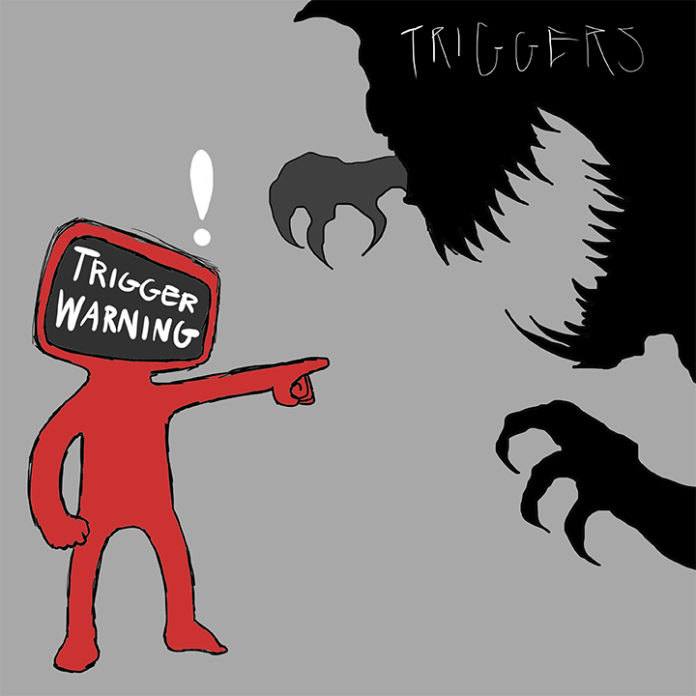In the past year, the phrase “trigger warning” has been part of a nationwide, continually re-emerging discussion about mental health and the so-called sensitivity of our generation. We’ve been accused, and accused others, of being overly reactive, “special snowflakes” who break down in the face of ideas and opinions that contradict our own. Trigger warnings have been held up as a barrier we’ve constructed to protect our fragile egos from dissent and from the reality of the world, and “#triggered” has become one of the most widely recognizable internet memes shared across global social media.
They have become satirical, a conservative jibe at liberal college students, an amusing saying between friends, but the joke has gone on long enough. To survivors of abuse and sexual assault, to men and women suffering from mental health disorders, trigger warnings are not a joke. For thousands of men and women across the globe, trigger warnings are the last chance to prepare to see, read or discuss something that may bring up painful memories or thoughts, and we need to take them seriously.
If you’re lucky, they don’t apply to you. Maybe you don’t see flashbacks of Afghanistan when you watch a movie about war crimes in your history class, or maybe you don’t still feel his hands on you when your English class reads a book containing a rape scene, but that doesn’t mean that other people are similarly spared. Those who suffer from Post-Traumatic Stress Disorder often experience intense flashbacks, and people with other mental disorders or who have survived traumas can be subject to intrusive, shockingly painful feelings and memories when confronted with situations that remind them of past experiences.
Trigger warnings are statements that prelude content that may be disturbing. They aren’t not a request for professors, lecturers or television producers to censor their material — it’s just a brief warning that the material that follows may explicitly discuss or portray topics that can be truly distressing.
We have to move away from the idea that trigger warnings are about protecting the “special snowflakes.” They aren’t. They aren’t about sheltering students’ minds from dissenting opinions, and they aren’t about ensuring that students aren’t exposed to things that are generally deemed graphic, frightening or sad.
They’re about giving people who need it a chance to put up their barriers, to prepare their minds against the very real onslaught of unwanted thoughts, memories or feelings that might emerge when presented with an image or topic that pulls back to the surface moments of intense pain or suffering.
It’s about giving people a chance to say no, to prioritize their mental health, to continue to heal from whatever they’ve survived or are struggling to survive.
Maybe they don’t apply to you — hopefully they don’t apply to you — but by reducing trigger warnings to an internet meme, we’re discounting the very real mental struggles faced by thousands of men and women nationwide.
Just because your demons differ from someone else’s, just because yours aren’t unleashed when you see a graphic rape scene, hear gunshots or read a book featuring an abusive character, doesn’t give you license to proclaim trigger warnings invalid. Trigger warnings are not a call for censorship, for sheltering, but for mere consideration, and they should be taken seriously.






